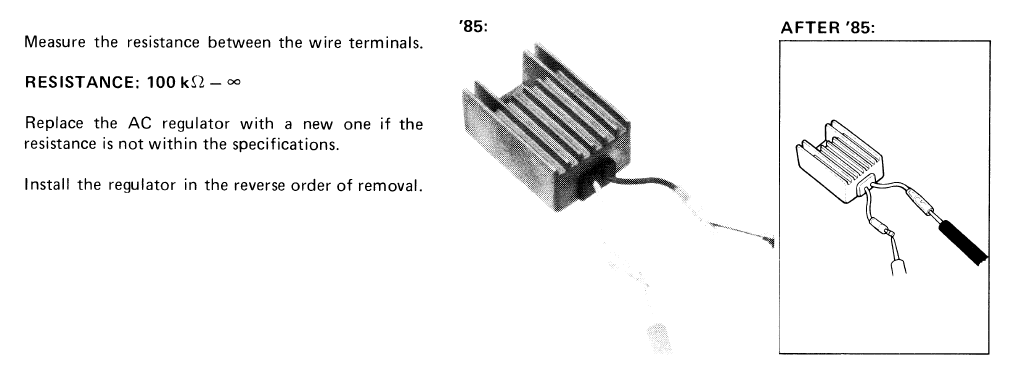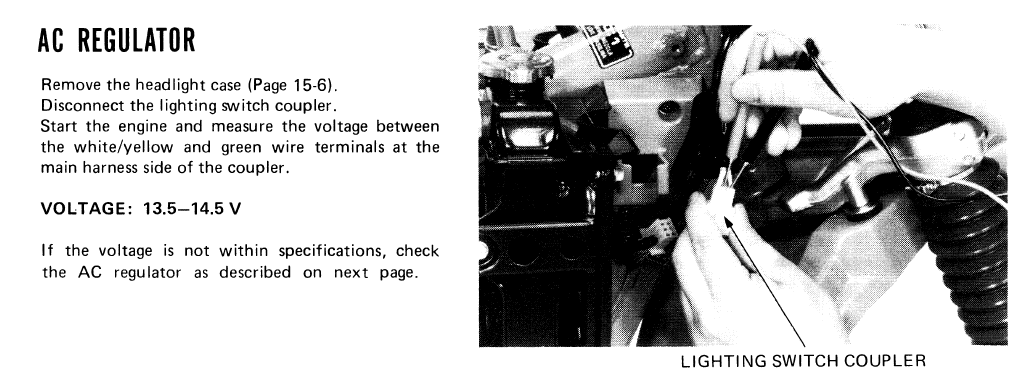Yea, regulator requirement would be because their stators are higher output.
Was it only the headlight bulb wired in? What was the wattage of it? The wire diagram says 50w and the taillight is 8w. I don't think a 50w headlight would blow in the system quite that fast if it was the stock stator. How was the regulator wired? The old school 2 wire style basically dynamically adjusts the draw to keep the voltage under a set value and generates heat as a byproduct. Maybe it's blown or has a bad connection.
The part number you listed is for a machine with a battery and looks to be 3 phase, pretty sure that's the wrong part.
This is the style of voltage regulator I'm thinking about where one lead is on the power and the other is on ground.
https://www.ebay.com/itm/1985-Honda-...hamKke&vxp=mtr
The other one linked above has the power run through the regulator, so you have to tap into the power output early, and only connect the rest of the harness to the output to keep it isolated (4 wire design). 5 and more wire is similar but for different alternator designs.
It probably would be best to get a multi meter to test things better.
Since you mentioned you have a 250r regulator, I looked up the wire diagrams for it, and looks like 85-86 were the only ones that had a regulator and is the 2 wire design like the 350x one I linked above. It also states it's an AC Regulator, not 100% sure if it would work with DC, could be part of your problem? Here's a page on how to test the regulator on a 85-86 atc250r. I suspect the voltage test would be done with the meter set to AC. You could test at the headlight plug with the lights turned on with no bulbs hooked up to test the voltage while running. In the service manual they are basically testing the light power wire going to the switches.
It might be worth while testing w\o the regulator hooked up to see what your base line is and see what voltage you get DC vs AC testing.





 Reply With Quote
Reply With Quote
